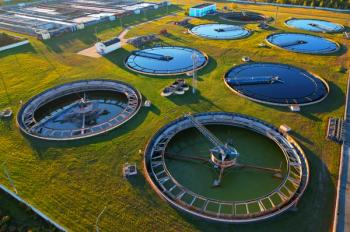
E-Separation Solutions
- E-Separation Solutions-03-11-2010
- Volume 0
- Issue 0
GC
With issues such as food safety pushing gas chromatography to the forefront of the research community, this mature technique has seen something of a renaissance in recent times.
With issues such as food safety pushing gas chromatography to the forefront of the research community, this mature technique has seen something of a renaissance in recent times.
Joining us for this discussion are Daniel W. Armstrong of the University of Texas, Arlington; Mark Taylor of Shimadzu Scientific Instruments, Inc.; Eric Ziegler of PerkinElmer; Michael Feeney of Agilent Technologies, Inc.; and Gavin Davies of ALMSCO International.
What trends have you most intrigued in the GC field?
Armstrong: The recent trends that have resulted in a resurgence in GC R&D are the advent of effective commercial GC x GC (2D-GC) instrumentation and the advent of the first new class of GC stationary phases in decades (i.e., high stability ionic liquids).
Taylor:I would have to say it is the constant evolution of products to meettoday's application demands. For instance, gas chromatographs are being improved to allow for faster run cycle times, higher throughput along with greater reproducibility, and detector sensitivity. Powerful multidimensionalseparation techniques continue to be refined and commercialized, allowingend-users to more easily acquire and apply to their specificchromatographic challenges. GC column development is shifting focus to new phase chemistries in an effort to further the field of separation science.
Ziegler:Certainly productivity is a key driver. Gas chromatographs are one of the most common-place work horses of the laboratory, as such users need results leading to information in a timely fashion. Being that GC is a separation technique, it's not always possible to significantly improve the speed of the chromatography, instead, there is a greater focus being put on the efforts to cut the nonproductive time. Ultimately, users gain productivity through injection-to-injection time reductions without impacting their core methodologies or sacrificing instrument performance.
Feeney:The most intriguing developments in GC include comprehensive new designs for 2D GC (GCxGC) and fluidic switching (Deans Switching) for multidimensional separations. Improvements in electronic pressure and flow control in modern GC instruments and the development of miniature and inert devices for column connections have greatly improved the performance and reliability of these techniques which has created new applications for these powerful techniques.
Davies:A revolution in fast GC column techniques – as seen in the world of liquid chromatography with emergence of UPLC pumps and column technologies. Miniaturization of the separation system allowing faster analyses and lower detection limits. Ever-reducing LODs, demanding higher instrumental selectivity and/or sensitivity. Tandem MS is one route; comprehensive chromatography with TOF-MS is another. These technologies complement each other.
GC can be used for many different applications, but which does it have the largest impact on (or possible impact)?
Armstrong:Anything involving complex samples (i.e., refined oil products, many complex foods/oils, environmental samples, and especially metabolomics).
Taylor:GC is a mature technique and is an important tool routinely used by manyindustries. One new emerging application area is in the biofuels and biomass research field. Scientists use GC to help in the characterization and monitoring of both gas and liquid phase compounds produced as a result of their fermentation and reactor experiments. This important research field is in the early development stages and I expect GC will continue to be an important tool in their research moving forward.
Ziegler:Environmental and human health are but two examples of areas of focus for GC. The need for clean air to breathe, pure water to drink, and safer foods to eat will keep driving the GC growth. In all of these markets, the use of mass spectrometry as a detector is becoming more significant, driving the need for easier to use tools.
Feeney:Analysis of environmental, food, and forensic samples containing high concentrations of sample matrix are one of the fastest growing applications areas for GC and GC-MS. At the same time there is a desire to minimize sample preparation so cold splitless injections using temperature programmed inlets (like PTV) are experiencing renewed interest.
Davies:European regulatory requirements relating to construction products and the indoor environment are currently undergoing major review. When the legislation is finalized it is expected that manufacturers will need to implement chemical emission testing, both in-house and by an accredited third-party laboratories, for a wide range of construction materials, decorative products, and furnishings as part of the CE marking process. Methods used to date have typically involved GC-MS analysis of the "volatile" content of products applied as liquids or direct analysis by thermal desorption coupled with GC-MS (TD-GC-MS) of small samples (solid or liquid) of products and materials. New, fast GC technology for emissions screening will not only minimize the burden of routine testing on manufacturers but will also facilitate the refinement of prototype materials in R&D.
Two more emerging applications are trace level detection using the TOF and the acceptance of a TOF, which gives classical electron ionization spectra enabling the use of current libraries for compound identification, sample preparation, and introduction of systems, such as thermal desorption.
Are there any obstacles standing in the way of GC development?
Armstrong:Better, easier to use software would be helpful.
Taylor:GC development tends to keep pace with technology. As manufacturingprocesses improve, so do the specifications of the latest GC. Forinstance, new electronic components and signal processors have lessnoise associated with them. New materials and cleaner manufacturingprocesses result in better electronic flow controllers that output less electrical and chemical "noise." By incorporating these new technologies into the latest GC, better performance and sensitivity may be realized.
Ziegler:Future improvements for GC throughput will imply the use of shorter capillary columns, faster and more sensitive detectors, and better injectors to reach higher sensitivities. Advances in technology continue to push the boundaries of what's practical, but there will always be a need for more information created at a faster rate.
Feeney:One of the most significant challenges in GC is how to evolve hardware and software to make GC systems easier to use for GC operators who have increasingly less experience and less interest in becoming gas chromatographers. GC instrument designers need to develop more intuitive software and hardware that is simple to maintain and operate, with built-in diagnostics, and method setup “wizards.”
Davies:For non-regulatory analyses the magnitude of the challenges in separations tend to be proportional to the cumulative neglect applied upstream; namely sample collection, sample handling, and preparation/extraction for analysis. These will include:
• Issues with matrix interferences. The unpredictable shifting of retention times of target compounds software packages can overcome these issues.
• The need to analyze smaller sample amounts. Through advances in MS sensitivity it is now possible to introduce smaller samples. This leads to improved lab efficiency by increasing the interval between scheduled maintenance routines. An analytical system that is capable of delivering adequate quantitative precision from greatly reduced sample sizes is highly future-proofed against changes in regulatory MDLs. A suitably designed TOF mass spectrometer is best suited to performing this in contrast to scanning instruments.
• The requirement to perform existing quadrupole-based analyses in faster inject-to-inject cycles. This is facilitated by, for example TOF-MS and compressed chromatography. A TOF, with its high data acquisition rate and full spectral sensitivity is the perfect complement to low thermal mass column heating devices enabling vastly accelerated GC separations.
Many companies launched new products at Pittcon 2010, were there any major breakthroughs in the technology?
Armstrong:The single most impressive breakthroughs are the new ionic liquid columns. They have unique selectivities and higher thermal stabilities than most conventional columns. I believe four types are available now and as many as 10 types could be available by the end of the year.
Taylor:There were new products, but I would classify most of these asincremental improvements.
Ziegler:There have been a number of incremental advances in GC over the past year. The primary focus has been around improving productivity. Productivity can be defined in terms of throughput, capacity, sensitivity, and flexibility leading to better information faster. The challenge is to improve each of these dimensions while making it easier to use.
Feeney:As a mature technique there were no major breakthroughs in GC technology but there continue to be new introductions in GC-MS detection and automation of sample introduction devices for GC. One area of sample automation by my company included demonstrating common sample preparation techniques, such as derivitization and standard addition using a routine automatic liquid sampler.
Davies:GC and GCxGC coupled with specialist benchtop TOF-MS offers complementary analytical power to Tandem MS. With a selectable spectral acquisition rate that exceeds 500 spectra per s, benchtop TOF coupled with a GC analytical system is capable of accommodating any GC or GCxGC separation.The primary performance advantages of GCxGC with TOF-MS are enhanced sensitivity AND reduction of baselines. Compounds that would normally elute as peaks of a few seconds peak width, are reinjected onto the second column in between two and four modulations whose eluting peaks have peak widths in the range 50 – 200 ms. Some compounds deliver an inadequate number or abundance of product ions for MRM analysis by tandem MS. Retention time shifts – a major problem for MRM -are easily accommodated in GCxGC and even badly shifted peaks can be automatically recognized from their mass spectral attributes. The TOF acquires full range comprehensive spectra, all the time; there are no timed groups of ions to maintain. GCxGC/TOF-MS allows archived data files to be subsequently examined after new compounds are appended to evolving methods. GCxGC increases peak capacity with its vast resolving power.
What is one change/improvement you hope to see in the GC industryover the next few years?
Armstrong:More and better 2D instrumentation and associated data handling capabilities, as well as more compact and sensitive instrumentation. Also, adopting newer stationary phases to solve the more difficult separation problems.
Taylor:As products continue to evolve and improve, I would like to see a"greener" approach to the manufacturing process and use of GC products.New design features should include a reduction in energy consumption,the use of less carrier and detector gases. Also, I’d like to see the further development ofhydrogen as a safe alternative to helium as carrier gas. Finally, asharper focus on the environmental impact of manufacturing andinevitable disposal of GC products as they travel through their lifespan.
Ziegler:Many users struggle in dealing with different software platforms. A unified software interface protocol within the GC manufacturers' community would allow customers to choose the very best technology to meet their needs without being locked into a specific vendor.
Feeney:As GC instruments and software become more intuitive and require less operator knowledge and experience to operate, it is reasonable that the technique of gas chromatography could expand into new markets which currently consider laboratory GC too complex or expensive. Gas chromatography could experience renewed growth into new markets and applications including measurements made outside of traditional laboratory environments.
Davies:Benchtop TOF mass spectrometers are the perfect partner to couple with any GC system in order to provide high sensitivity and classical EI spectra that scientists aspire to achieve. These features have led to a wider acceptance of TOF MS as the “standard” mass spectrometer of choice especially for trace GC-MS work.
If you are interested in participating in any upcoming Technology Forums please contact Associate Editor
Articles in this issue
almost 16 years ago
GC Rising Baselinealmost 16 years ago
Supercritical fluid chromatographyalmost 16 years ago
Fast Separation of Chlorinated Pesticides Using Zebron GC ColumnsNewsletter
Join the global community of analytical scientists who trust LCGC for insights on the latest techniques, trends, and expert solutions in chromatography.





